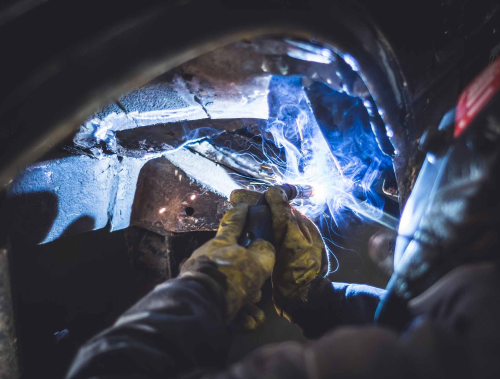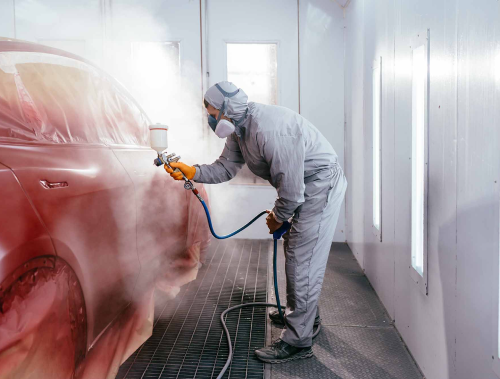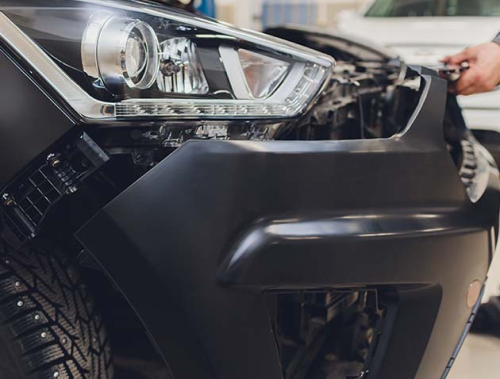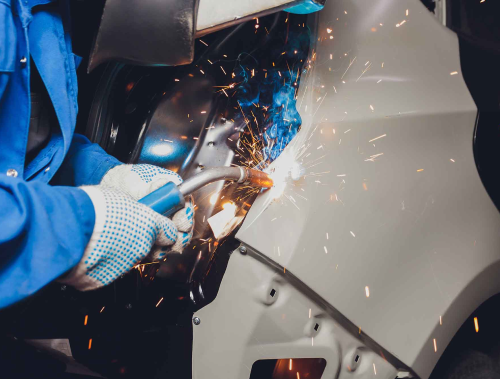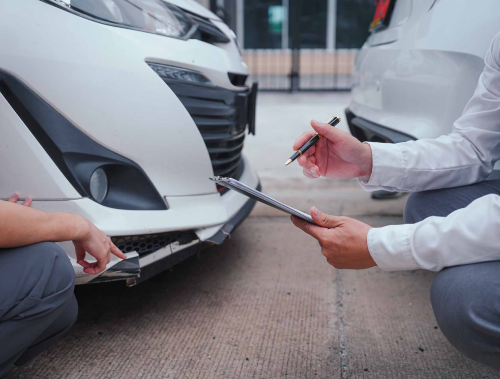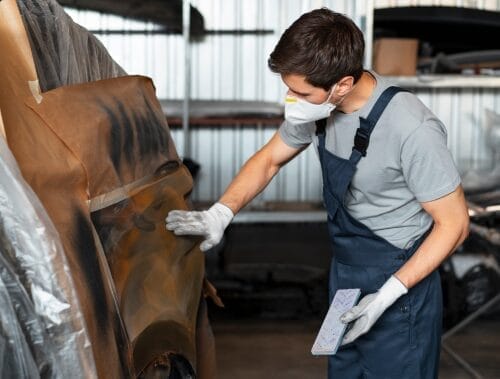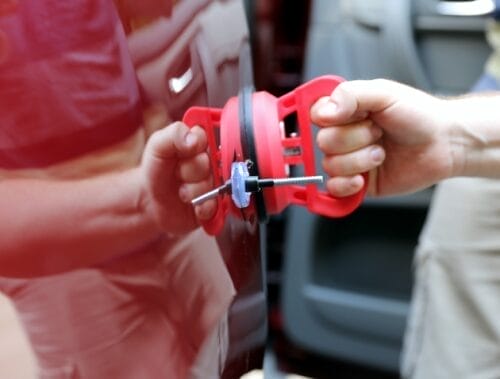Understanding how environmental factors affect your car’s exterior is crucial for maintaining its appearance and longevity. From sun exposure to rain and moisture, various elements can cause significant damage to your vehicle. Read on for more information about these environmental impacts and practical preventive tips to protect your vehicle.
Sun Exposure
Effects on Paint and Interior
Sun exposure is one of the most damaging environmental factors for your car’s exterior. Prolonged exposure to the sun’s ultraviolet (UV) rays can lead to the fading and oxidation of your car’s paint. This not only diminishes the car’s aesthetic appeal but also reduces its resale value.
- Fading and Oxidation: Over time, UV rays break down the chemical bonds in the paint, causing it to fade and lose its shine. Oxidation occurs as the paint’s top layer deteriorates, making the surface appear dull and chalky.
- Cracked Dashboards and Interior Deterioration: The interior of your car is also at risk. Continuous sun exposure can cause dashboards and seats to crack and fade, compromising both comfort and appearance.
Temperature Extremes
Extreme temperatures can further exacerbate the damage caused by sun exposure. Both high heat and cold can warp and make materials brittle, affecting both the exterior and interior of your car.
- Warping and Brittleness: Extreme heat can cause plastic and rubber components to warp, while extreme cold can make these materials brittle and prone to cracking. This impacts the integrity of your car’s trim, seals, and interior components.
- Impact on Materials: Repeated cycles of heating and cooling can weaken materials over time, leading to premature aging and potential failure of parts.
Preventive Measures
To protect your car from sun damage and temperature extremes, consider the following preventive measures:
- Parking in Shaded Areas or Using Car Covers: Whenever possible, park your car in a garage or shaded area to minimize direct sun exposure. If this isn’t an option, use a car cover to provide a protective barrier against UV rays.
- Applying UV Protective Wax and Interior Conditioners: Regularly applying a UV protective wax can shield your car’s paint from harmful rays. For the interior, use conditioners specifically designed for dashboards and seats to prevent cracking and fading.
Rain and Moisture
Rain and moisture are significant environmental factors that can lead to rust and corrosion on your car. Understanding how these elements impact your vehicle and how to mitigate their effects is crucial for maintaining your car’s exterior.
Rust and Corrosion
Rain and moisture can have detrimental effects on your vehicle, particularly in areas where water tends to accumulate.
- Undercarriage Areas: The undercarriage of your car is highly susceptible to rust because it is constantly exposed to water, salt, and road grime. When moisture accumulates, it promotes the formation of rust, which can weaken the structural integrity of your car.
- Metal Components: Over time, moisture can accelerate the deterioration of metal components, leading to extensive damage and costly repairs. Rust can spread quickly if not addressed, affecting the overall safety and performance of your vehicle.
Proper Maintenance
Regular maintenance can help prevent the buildup of moisture and reduce the risk of rust.
- Regular Car Washes: Washing your car regularly helps remove moisture, salt, and grime that can cause rust. Be sure to wash the undercarriage thoroughly, especially after driving on salted roads.
- Thorough Drying Techniques: After washing your car, ensure it is completely dry. Pay extra attention to areas where water can collect, such as door seals and the undercarriage. Using compressed air or a leaf blower can help remove water from hard-to-reach places.
Preventive Measures
Implementing preventive measures can further protect your car from the damaging effects of rain and moisture.
- Rustproofing Treatments: Applying rustproofing treatments to your car’s undercarriage and other vulnerable areas can create a protective barrier against moisture and salt. These treatments are especially beneficial for vehicles regularly exposed to wet conditions.
- Clear Drainage Areas: Keep drainage areas, such as sunroof drains and door sills, clear of debris to prevent water accumulation. Regularly inspect these areas to ensure they are functioning correctly.
Other Environmental Factors
In addition to sun and moisture, several other environmental factors can damage your car’s exterior.
Bird Droppings and Tree Sap
Bird droppings and tree sap are common contaminants that can cause significant damage to your car’s paint.
- Acidic Nature of Bird Droppings: Bird droppings are acidic and can eat through your car’s paint if not removed promptly. They can cause discoloration and etching, leading to permanent damage.
- Sticky Sap: Tree sap is sticky and difficult to remove. If left on your car’s surface, it can cause stains and damage to the paint.
Dust and Sand
Dust and sand can cause scratches and dull your car’s finish over time.
- Scratches and Dulling: Dust and sand particles can scratch your car’s paint when they accumulate and are wiped off improperly. This can result in a dull and damaged appearance.
- Impact on Components: Dust and sand can also affect mechanical components, such as brakes and suspension, leading to increased wear and tear.
Prompt Removal
Promptly removing contaminants from your car’s surface is essential for preventing damage.
- Importance of Prompt Removal: Removing bird droppings, tree sap, dust, and sand as soon as possible can prevent them from causing long-term damage to your car’s paint and components.
- Recommended Cleaning Products and Techniques: Use gentle cleaning products and techniques to remove contaminants without scratching the paint. Microfiber cloths and automotive-specific cleaners are ideal for this purpose.
General Preventive Tips
Implementing general preventive measures can help maintain your car’s exterior condition and protect it from environmental damage.
Regular Car Washing
Washing your car regularly is one of the best ways to protect its exterior.
- Frequency: Aim to wash your car at least once a week, or more frequently if exposed to harsh conditions. Regular washing helps remove contaminants that can damage the paint and components.
- Choosing the Right Products: Use automotive-specific soaps and cleaning products to avoid damaging the paint. Avoid household cleaners, as they can be too harsh for your car’s surface.
Protective Coatings
Applying protective coatings can provide an extra layer of defense against environmental factors.
- Benefits of Wax and Ceramic Coatings: Wax and ceramic coatings create a protective barrier on your car’s paint, shielding it from UV rays, moisture, and contaminants. These coatings can also enhance the shine and durability of your car’s finish.
- Shielding Against Damage: Protective coatings help prevent scratches, fading, and oxidation, keeping your car looking new for longer.
Routine Inspections
Regular inspections can help identify and address minor issues before they become major problems.
- Checking for Signs of Damage: Regularly inspect your car’s exterior for signs of damage, such as scratches, rust, or fading. Pay special attention to areas prone to moisture accumulation and UV exposure.
- Addressing Minor Issues: Promptly address minor issues to prevent them from worsening. Small scratches can be polished out, and early signs of rust can be treated before they spread.
Conclusion
Environmental factors such as sun exposure, rain, moisture, bird droppings, tree sap, dust, and sand can significantly impact your car’s exterior. By understanding these threats and implementing preventive measures, you can protect your car’s appearance and extend its lifespan. Regular maintenance, protective coatings, and routine inspections are essential steps in safeguarding your vehicle from environmental damage.

